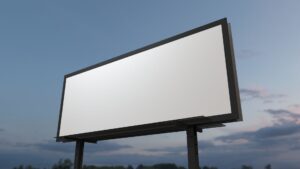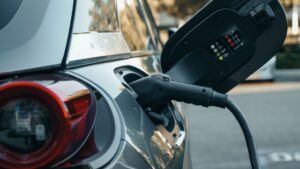Billboards vs. Digital Screens: Is Traditional Outdoor Advertising Still Effective?
With the rise of digital screens, many businesses wonder if traditional billboards still hold their value in outdoor advertising. While digital billboards offer dynamic messaging and real-time updates, traditional static billboards remain a cost-effective and powerful tool for long-term brand awareness.
So, which format is better for your advertising strategy? The answer depends on your goals, budget, and audience. This blog will break down the advantages of traditional vs digital billboards, helping businesses make an informed decision.
Traditional Billboards vs. Digital Screens: Key Differences
| Factor | Traditional Billboards | Digital Billboards |
|---|---|---|
| Ad Format | Static image, printed on vinyl | Dynamic, rotating digital display |
| Cost | Lower cost, fixed pricing | Higher cost, variable pricing |
| Flexibility | Fixed message for the duration of the campaign | Ability to change messaging instantly |
| Impressions | 24/7 exposure with no competition | Shared space with multiple advertisers |
| Production Time | Requires printing and installation | Can be uploaded instantly |
| Best Use Cases | Long-term brand awareness, simple messaging | Time-sensitive promotions, interactive campaigns |
Both formats offer unique benefits, and businesses must choose based on campaign needs and budget.
The Advantages of Traditional Billboards
Static billboards remain one of the most reliable and cost-effective forms of outdoor advertising. Here’s why they continue to be relevant:
1. High Visibility and Uninterrupted Exposure
Traditional billboards provide constant visibility without interruptions from rotating ads. Unlike digital screens, where multiple advertisers share space, a static billboard ensures 100% share of voice for the entire campaign duration.
Example: A local restaurant can use a billboard along a busy highway with a simple message like, “Best BBQ in Town – Exit 5.” Since the message is always visible, it continuously reinforces brand awareness.
2. Cost-Effective for Long-Term Advertising
Static billboards typically cost less per month than digital billboards, making them ideal for long-term brand exposure. They work well for businesses that want consistent messaging without frequent updates.
Best for:
- Local businesses promoting their location (e.g., “Now Open – Main St.”)
- Retailers building long-term brand recognition
- Companies with a limited advertising budget
3. More Impact in Rural and Highway Locations
Traditional billboards dominate highways, suburban areas, and rural markets, where digital screens are less common. This makes them a better option for businesses targeting commuters and travelers.
Example: A hotel chain using static billboards along highways to direct travelers to nearby locations.
4. No Power or Technical Failures
Digital billboards rely on electricity and software to operate. Power outages, screen malfunctions, or software glitches can disrupt an ad’s visibility. Static billboards remain unaffected by technology failures, ensuring continuous exposure.
The Advantages of Digital Billboards
While static billboards offer reliability and cost efficiency, digital billboards provide flexibility, interactivity, and real-time messaging.
1. Dynamic and Real-Time Updates
One of the biggest advantages of digital billboards is the ability to update messaging instantly. Businesses can schedule different ads throughout the day or adjust content based on real-time events.
Examples of real-time digital billboard applications:
- A retail store promoting a flash sale for one day only.
- A sports brand updating ads based on game results.
- A weather-responsive ad changing based on temperature or rain conditions.
2. Shared Ad Space Allows for Lower Entry Costs
While digital billboards have higher per-ad costs, they allow multiple advertisers to share the same space, making it possible for businesses to buy smaller time slots at a lower cost.
Example: A restaurant can run its ad during morning rush hour when commuters are looking for breakfast, rather than paying for 24/7 exposure.
3. Ideal for Event-Based or Short-Term Promotions
Digital billboards work well for time-sensitive campaigns that require frequent updates. Businesses that rotate promotions, announce new products, or advertise events can benefit from digital screens.
Best for:
- Limited-time sales or promotions
- Political campaigns with evolving messaging
- Public service announcements (e.g., Amber Alerts, traffic updates)
4. Interactivity and Engagement
Digital billboards can incorporate QR codes, countdown timers, or live social media feeds, encouraging audience interaction.
Example: A concert promotion featuring a countdown clock to the event date can create urgency and engagement.
Which Billboard Type is Best for Your Business?
Choosing between traditional and digital billboards depends on your business goals and advertising strategy.
Choose Traditional Billboards If:
✔ You need constant exposure without ad rotations
✔ Your budget requires a lower-cost, long-term investment
✔ Your message doesn’t need frequent updates
✔ You’re advertising in rural or highway locations where digital screens are rare
Choose Digital Billboards If:
✔ You need flexibility to update messaging frequently
✔ Your campaign is short-term or time-sensitive
✔ You want interactive elements like QR codes or countdowns
✔ You are targeting an urban, high-traffic audience
Some businesses combine both strategies—using traditional billboards for long-term branding and digital screens for real-time promotions.
Common Misconceptions About Traditional and Digital Billboards
Misconception #1: “Digital billboards are always better than static billboards.”
✔ Reality: Digital works well for short-term, interactive campaigns, but traditional billboards are better for consistent, long-term visibility.
Misconception #2: “Traditional billboards are outdated.”
✔ Reality: Static billboards still account for the majority of outdoor advertising and remain highly effective, especially along highways and in suburban areas.
Misconception #3: “Digital billboards are too expensive for small businesses.”
✔ Reality: While digital ads have higher upfront costs, businesses can purchase shorter time slots at a lower cost.
Misconception #4: “Traditional billboards can’t be customized.”
✔ Reality: Static billboards can still be highly creative, using 3D elements, extensions, and unique materials to stand out.
Final Thoughts: Choosing the Right Billboard for Maximum Impact
Both traditional and digital billboards remain highly effective for outdoor advertising—each with its own strengths.
- Static billboards are best for long-term brand awareness, affordability, and 24/7 exposure.
- Digital billboards excel in flexibility, real-time updates, and short-term promotions.
For businesses looking to maximize impact, a hybrid approach—using both formats strategically—can offer the best of both worlds.
Effortless Outdoor Media specializes in custom billboard solutions, helping businesses find the perfect traditional or digital billboard strategy to meet their goals.
Ready to launch your billboard campaign?
Contact Bill Hobbs at Effortless Outdoor Media today for expert guidance on choosing the right billboard type for your business.
“If you are in need of expert advice and knowledge about billboards in the Atlanta market, Bill Hobbs brings tremendous value.” | From Dan Jape, Owner of RELIABLE HEATING AND AIR.



